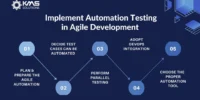The integration of blockchain technology into existing systems has become a game-changer for businesses across various industries. As organizations seek to harness the potential of decentralized and secure transactions, the seamless integration of blockchain becomes a pivotal step. In this article, we’ll explore quick tips to help you navigate the complexities of blockchain integration and unlock the benefits of this revolutionary technology.
1. Understand Your Use Case
Before diving into blockchain integration, it’s crucial to have a clear understanding of your use case. Whether it’s supply chain management, smart contracts, or data security, identifying the specific problem you aim to solve will guide your integration strategy.
2. Choose the Right Blockchain Platform
Not all blockchains are created equal. Select a blockchain platform that aligns with your use case and requirements. Whether it’s Ethereum, Hyperledger, or others, each platform has its strengths and weaknesses. Consider factors such as scalability, consensus mechanism, and development flexibility.
3. Ensure Regulatory Compliance
Blockchain operates in a regulated environment, and compliance is essential. Understand the legal implications and regulatory requirements associated with your industry and geographic location. Compliance ensures that your blockchain integration adheres to existing laws and standards.
4. Develop a Proof of Concept (PoC) ️
Before full-scale integration, create a Proof of Concept (PoC) to test the feasibility of your blockchain solution. A PoC allows you to validate your ideas, identify potential challenges, and demonstrate the value of blockchain integration to stakeholders.
5. Focus on Interoperability
Interoperability is key to successful blockchain integration, especially in a world with multiple blockchains. Ensure that your chosen blockchain solution can seamlessly integrate with existing systems, databases, and other technologies. Interoperability simplifies the transition and minimizes disruptions.
6. Implement Robust Security Measures
Security is a top priority in blockchain integration. Implement robust security measures, including encryption, identity management, and access controls. The decentralized nature of blockchain doesn’t eliminate security concerns, so a proactive approach is essential.
7. Provide Adequate Training
Introducing blockchain to your organization requires a cultural shift. Provide adequate training to your team members to ensure they understand the principles, benefits, and operational aspects of blockchain. A well-informed team contributes to the smooth integration and adoption of the technology.
8. Establish Governance Mechanisms
Define clear governance mechanisms for your blockchain network. This includes consensus rules, smart contract management, and decision-making processes. Establishing governance ensures that the blockchain operates efficiently and that all participants are aware of their roles and responsibilities.
9. Conduct Thorough Testing
Prior to deployment, conduct thorough testing of your integrated blockchain solution. This includes functional testing, security testing, and performance testing. Testing helps identify and address any issues before the solution goes live, reducing the risk of unexpected challenges.
10. Plan for Scalability
As your organization grows, so does the demand on your blockchain network. Plan for scalability from the beginning, considering factors such as increased transaction volume and additional participants. Scalability ensures that your blockchain solution can evolve with the changing needs of your business.
Conclusion: Transforming Business with Blockchain
Blockchain integration is a transformative journey that holds the potential to revolutionize the way businesses operate. By understanding your use case, choosing the right platform, ensuring compliance, and following best practices, you can seamlessly integrate blockchain and unlock the benefits of decentralization, transparency, and enhanced security. Embrace the blockchain revolution and propel your organization into the future!








